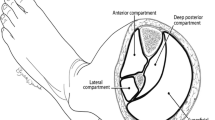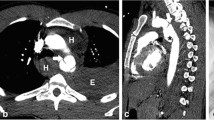Abstract
The gunshot wounds sustained on the battlefield caused by military ammunition can be different in nature to those usually encountered in the civilian setting. The main difference is that military ammunition has typically higher velocity with therefore greater kinetic energy and consequently potential to destroy tissue. The surgical priorities in the management of gunshot wounds are hemorrhage control, preventing infection, and reconstruction. The extent to which a gunshot wound needs to be surgically explored can be difficult to determine and depends on the likely amount of tissue destruction and the delay between wounding and initial surgical treatment. Factors associated with greater energy transfer, e.g., bullet fragmentation and bony fractures, are predictors of increased wound severity and therefore a requirement for more surgical exploration and likely debridement. Gunshot wounds should never be closed primarily; the full range of reconstruction from secondary intention to free tissue transfer may be required.

Similar content being viewed by others
References
Papers of particular interest, published recently, have been highlighted as: • Of importance
Penn-Barwell JG, Roberts SA, Bishop JRB, Midwinter MJ. Improved survival in UK combat casualties from Iraq and Afghanistan: 2003–2012. J Trauma 2015;78–5:In press. Most up to date study of wounding patterns in modern combat with only analysis from recent conflict in Iraq and Afghanistan proving the survival has improved during that conflict.
Lewin IJS. Contingency: the likely spectrum of injuries based upon a review of 3 recent undeveloped theatres of operations; the Falklands, Telic 1 and Herrick 4. J R Nav Med Serv 2014;100–1:In print.
Brennen CE. Cavitation and bubble dynamics. New York: Oxford: Oxford University Press; 1995.
Birch R, Misra P, Stewart MP, Eardley WG, Ramasamy A, Brown K, et al. Nerve injuries sustained during warfare: part I—epidemiology. J Bone Joint Surg (Br). 2012;94–4:523–8. Excellent examination of ballistic nerve injuries sustained in combat.
Seddon HJ. A Classification of Nerve Injuries. Br Med J. 1942;2–4260:237–9.
Fackler ML, Surinchak JS, Malinowski JA, Bowen RE. Bullet fragmentation: a major cause of tissue disruption. J Trauma. 1984;24–1:35–9.
Amato JJ, Billy LJ, Gruber RP, Rich NM. Temporary cavitation in high-velocity pulmonary missile injury. Ann Thorac Surg. 1974;18–6:565–70.
National Association of Emergency Medical Technicians (U.S.). Pre-Hospital Trauma Life Support Committee. American College of Surgeons. Committee on Trauma. PHTLS : pre-hospital trauma life support. Military 7th ed. St. Louis, MO: Mosby Jems/Elsevier; 2011. xxv, 783 p.
Gordy SD, Rhee P, Schreiber MA. Military applications of novel hemostatic devices. Expert Rev Med Devices. 2011;8–1:41–7.
Butler FK. Tactical combat casualty care: update 2009. J Trauma. 2010;69 Suppl 1:S10–3.
Borgman MA, Spinella PC, Perkins JG, Grathwohl KW, Repine T, Beekley AC, et al. The ratio of blood products transfused affects mortality in patients receiving massive transfusions at a combat support hospital. J Trauma. 2007;63–4:805–13.
Midwinter MJ, Woolley T. Resuscitation and coagulation in the severely injured trauma patient. Philos Trans R Soc Lond B Biol Sci. 2011;366–1562:192–203.
Yilmaz AT, Arslan M, Demirkilic U, Ozal E, Kuralay E, Tatar H, et al. Missed arterial injuries in military patients. Am J Surg. 1997;173–2:110–4.
Fox CJ, Gillespie DL, O’Donnell SD, Rasmussen TE, Goff JM, Johnson CA, et al. Contemporary management of wartime vascular trauma. J Vasc Surg. 2005;41–4:638–44.
Rasmussen TE, Clouse WD, Jenkins DH, Peck MA, Eliason JL, Smith DL. The use of temporary vascular shunts as a damage control adjunct in the management of wartime vascular injury. J Trauma. 2006;61–1:8–12. discussion −5.
Lack WD, Karunakar MA, Angerame MR, Seymour RB, Sims S, Kellam JF, et al. Type III open tibia fractures: immediate antibiotic prophylaxis minimizes infection. J Orthop Trauma. 2015;29–1:1–6.
Penn-Barwell JG, Murray CK, Wenke JC. Early antibiotics and debridement independently reduce infection in an open fracture model. J Bone Joint Surg (Br). 2012;94–1:107–12.
Fackler ML, Malinowski JA. The wound profile: a visual method for quantifying gunshot wound components. J Trauma. 1985;25–6:522–9.
Coupland RM, Samnegaard HO. Effect of type and transfer of conventional weapons on civilian injuries: retrospective analysis of prospective data from Red Cross hospitals. BMJ. 1999;319–7207:410–2.
Owens BD, White DW, Wenke JC. Comparison of irrigation solutions and devices in a contaminated musculoskeletal wound survival model. J Bone Joint Surg Am. 2009;91–1:92–8.
Stannard JP, Volgas DA, Stewart R, McGwin G, Alonso JE. Negative pressure wound therapy after severe open fractures: a prospective randomized study. J Orthop Trauma. 2009;23–8:552–7.
Fries CA, Ayalew Y, Penn-Barwell JG, Porter K, Jeffery SL, Midwinter MJ. Prospective randomised controlled trial of nanocrystalline silver dressing versus plain gauze as the initial post-debridement management of military wounds on wound microbiology and healing. Injury. 2014;45–7:1111–6.
Penn-Barwell JG, Fries CA, Street L, Jeffery S. Use of topical negative pressure in British servicemen with combat wounds. Eplasty. 2011;11:e35.
Possley DR, Burns TC, Stinner DJ, Murray CK, Wenke JC, Hsu JR. Temporary external fixation is safe in a combat environment. J Trauma. 2010;69 Suppl 1:S135–9.
Bowyer GW, Rossiter ND. Management of gunshot wounds of the limbs. J Bone Joint Surg (Br). 1997;79–6:1031–6.
Fackler ML, Breteau JP, Courbil LJ, Taxit R, Glas J, Fievet JP. Open wound drainage versus wound excision in treating the modern assault rifle wound. Surgery. 1989;105–5:576–84. Well-conducted animal study proving that simple wounds from high-energy modern munitions can be safely managed conservatively.
Hopkinson DA, Watts JC. Studies in experimental missile injuries of skeletal muscle. Proc R Soc Med. 1963;56:461–8.
Ogilvie WH. Cardinal sins of war surgery. Bull US Army Med Dept. 1944;76:35–6.
Giannou G, Baldan M. War surgery: working with limited resources in armed conflicts and other situations of violence, vol. 1. Geneva: International Committee of the Red Cross; 2010.
Karanas YL, Nigriny J, Chang J. The timing of microsurgical reconstruction in lower extremity trauma. Microsurgery. 2008;28–8:632–4.
Godina M. Early microsurgical reconstruction of complex trauma of the extremities. Plast Reconstr Surg. 1986;78–3:285–92.
de Veth C. Development of the new second NATO calibre: the "5.56" with the SS109 projectile. Acta Chir Scand Suppl. 1982;508:129–34.
Fackler ML, Surinchak JS, Malinowski JA, Bowen RE. Wounding potential of the Russian AK-74 assault rifle. J Trauma. 1984;24–3:263–6.
IHS Jane’s weapons. Infantry. Coulsdon : IHS Global, 2012.
Acknowledgments
No benefits in any form have been received or will be received from a commercial party related directly or indirectly to the subject of this article. The authors are all serving medical officers in the UK Armed Forces.
Compliance with Ethics Guidelines
ᅟ
Conflict of Interest
None of the authors have any conflicts of interest with the subject of this work.
Human and Animal Rights and Informed Consent
This article does not contain any studies with human or animal subjects performed by any of the authors.
Author information
Authors and Affiliations
Corresponding author
Additional information
The opinions or assertions contained herein are the private views of the authors and are not to be construed as official or as reflecting the views of the Ministry of Defence or Her Majesty’s Government.
© Crown Copyright 2015
This article is part of the Topical Collection on Gunshot Wounds and Blast Injuries
Rights and permissions
About this article
Cite this article
Penn-Barwell, J.G., Brown, K.V. & Fries, C.A. High velocity gunshot injuries to the extremities: management on and off the battlefield. Curr Rev Musculoskelet Med 8, 312–317 (2015). https://doi.org/10.1007/s12178-015-9289-4
Published:
Issue Date:
DOI: https://doi.org/10.1007/s12178-015-9289-4




